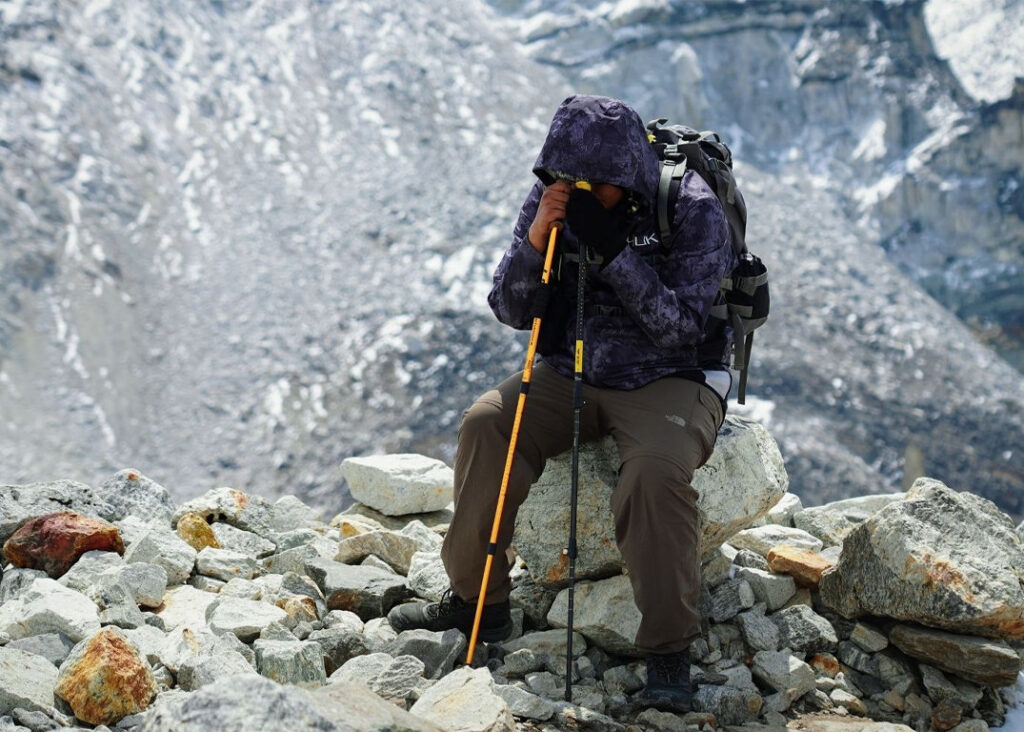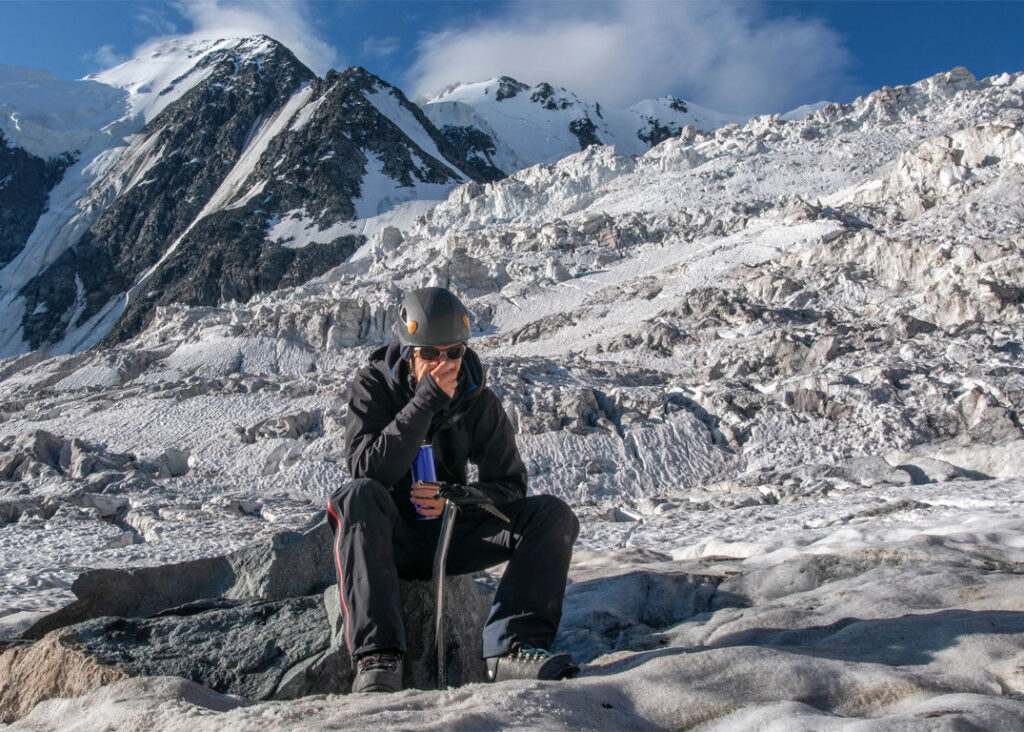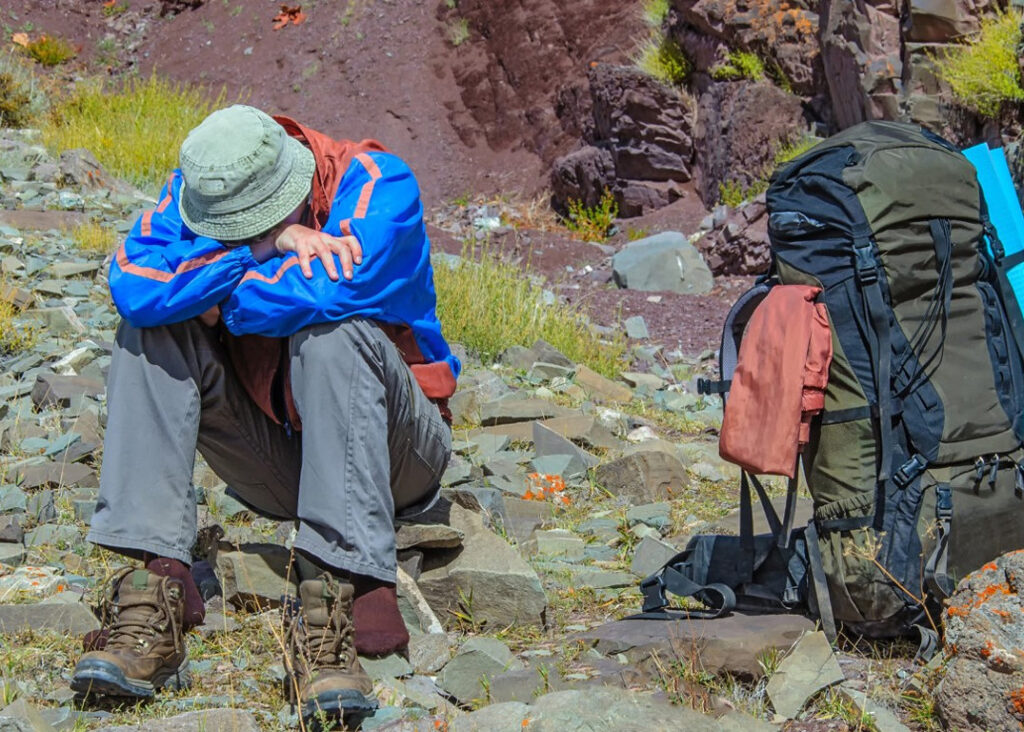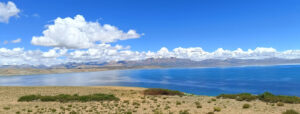Imagine standing on the edge of a picturesque mountain, gazing at the breathtaking view beneath you. But amidst this grandeur lies an altitude sickness.
Whether you’re a seasoned mountaineer or planning a high-altitude adventure, it’s essential to be aware of the facts surrounding altitude sickness. In this blog post, we’ll uncover key facts to help you understand and prepare for this potentially debilitating condition.
What is Altitude Sickness?
Altitude sickness, also known as acute mountain sickness (AMS), is a common condition that can affect individuals when they ascend to high altitudes too quickly. It occurs due to reduced oxygen levels and lower air pressure at higher elevations.

While sickness can affect anyone, regardless of age or fitness level, it is difficult to predict who will be more susceptible. The severity of the symptoms can also vary from person to person.
At what height do people get affected by Altitude Sickness?
Altitude sickness can occur at various heights, but it is more commonly experienced above 8,000 feet (2,400 meters) of elevation. However, it’s important to note that susceptibility to altitude sickness varies among individuals, and some people may start experiencing symptoms at lower elevations.
The severity and onset of symptoms can also be influenced by factors such as the rate of ascent, individual acclimatization, and underlying health conditions. It’s crucial to be aware of the potential risks and take appropriate precautions when ascending to higher altitudes.
What are the different types of Altitude Sickness?
There are three main types of altitude sickness:
Acute Mountain Sickness (AMS)
Acute Mountain Sickness is the most common type of altitude sickness typically occurring at altitudes above 2,400 meters (8,000 feet). The primary cause is the rapid ascent to higher elevations, which doesn’t allow sufficient time for acclimatization. This is the mildest and most common form of sickness.
Also Read: What are Prayer Flags?
Symptoms typically develop within a few hours to a day after reaching a high altitude. Symptoms of AMS include headache, nausea, dizziness, fatigue, loss of appetite, difficulty sleeping, and shortness of breath.
High Altitude Cerebral Edema (HACE)
HACE is a severe and potentially fatal form of altitude sickness. It happens when fluid builds up in the brain as a result of the body’s reaction to low oxygen levels at high altitudes. Severe headache, confusion, disorientation, hallucination, trouble walking, seizure, and loss of consciousness are all symptoms of HACE.

High Altitude Pulmonary Edema (HAPE)
HAPE is another severe and potentially life-threatening form of sickness. It happens when fluid accumulates in the lungs, making it difficult to breathe. Symptoms of HAPE include shortness of breath, rapid breathing, cough (often with pink or frothy sputum), chest tightness, fatigue, and bluish lips or fingertips.
Who gets Altitude Sickness?
Altitude sickness can affect individuals who ascend to high altitudes too quickly without allowing their bodies enough time to acclimatize. It is more common at altitudes above 8,000 feet (2,400 meters) but can occur at lower elevations as well.
The severity of symptoms can vary from mild to severe and can affect anyone, regardless of age, sex, or level of physical fitness.
Long-Term Effect of Altitude Sickness
While the symptoms of sickness are generally temporary and resolve with acclimatization or descent, in some cases, there can be long-term effects that linger even after returning to lower elevations. Let’s take a look into the potential long-term consequences of sickness and explore the factors contributing to their occurrence.
High-Altitude Pulmonary Edema (HAPE)
One of the most severe complications of altitude sickness, HAPE, can leave long-lasting effects on the respiratory system. HAPE involves the accumulation of fluid in the lungs due to increased pressure in the pulmonary blood vessels.

Even after recovering from HAPE, individuals may experience persistent respiratory symptoms, reduced exercise tolerance, and increased susceptibility to respiratory infections.
High-Altitude Cerebral Edema (HACE)
Similar to HAPE, HACE is a severe form of altitude sickness that affects the brain. It occurs when the brain swells due to fluid leakage, potentially leading to neurological damage.
While prompt treatment and descent are critical to recovery, individuals who have experienced HACE may face long-term cognitive impairments, memory difficulties, and neurological symptoms.
Cognitive and Neurological Effects
Even without developing HACE, prolonged exposure to high altitudes can affect cognitive function and mental health. Studies have suggested that individuals who frequently ascend to high altitudes may experience subtle changes in memory, attention, and decision–making abilities.
Furthermore, mood disorders such as depression and anxiety have been associated with altitude exposure, potentially impacting overall well-being.
Retinal Damage
Prolonged exposure to high altitudes can also pose a risk to ocular health. The reduced oxygen levels at altitude can cause damage to the retinal cells, leading to visual disturbances and even permanent vision loss.
Also Read: Langtang Trek Difficulty: How to Overcome
These visual impairments can persist even after returning to lower elevations, highlighting the importance of protective measures such as wearing sunglasses and using appropriate eye care at high altitudes.
Cardiovascular Consequences
Altitude sickness can have long-term effects on cardiovascular health. The low oxygen environment triggers the body to increase heart rate and blood pressure to compensate.
This prolonged strain on the cardiovascular system may contribute to the development of hypertension and other cardiovascular conditions which can persist even after descending to lower elevations.
Causes of Altitude Sickness
Let’s take a look into the causes of altitude sickness:
Thin Air and Decreased Oxygen Levels
At high altitudes, the air becomes significantly thinner, which means the density of oxygen molecules decreases. As you ascend above 8,000 feet (2,400 meters), the reduced oxygen availability starts to affect your body.
The low atmospheric pressure hampers the intake of oxygen into the bloodstream, leading to a condition called hypoxia. Hypoxia, or lack of oxygen, is the primary trigger for altitude sickness.
Rapid Ascent
One of the leading causes of altitude sickness is ascending too quickly without allowing the body to acclimatize properly. When you ascend rapidly, your body doesn’t have enough time to adjust to the reduced oxygen levels.

This can result in the onset of altitude sickness symptoms. The rate at which altitude sickness sets in varies from person to person, making it crucial to ascend gradually.
Individual Susceptibility
Altitude sickness doesn’t discriminate; it can affect anyone, regardless of age, gender, or physical fitness level. However, some individuals may be more susceptible to the condition than others.
There is no surefire way to predict who will be affected, but research suggests that certain genetic factors, such as how your body responds to low oxygen levels, may play a role. Therefore, even experienced mountaineers are not immune to altitude sickness.
Lack of Proper Acclimatization
Acclimatization is the process by which your body adjusts to the decreasing oxygen levels at higher altitudes. It involves physiological changes that help your body adapt to the challenging environment.
Insufficient acclimatization is a common cause of altitude sickness. Failing to spend enough time at intermediate altitudes to allow your body to adjust can significantly increase your risk of developing symptoms.
Dehydration
Dehydration can exacerbate the symptoms of altitude sickness. As you ascend, the cold, dry mountain air increases the rate of fluid loss from your body through respiration and increased urine output.
When dehydrated, your blood thickens, making it harder for oxygen to reach vital organs. Staying properly hydrated is crucial in mitigating the risk of altitude sickness.
Symptoms of Altitude Sickness
While exploring breathtaking mountain ranges or embarking on high-altitude treks can be exhilarating, it is crucial to understand the symptoms of altitude sickness. Let’s take a look at the symptoms of altitude sickness.
Headache
One of the most common symptoms of altitude sickness is a persistent headache. It typically appears within 6 to 12 hours after ascending to a high altitude and is often described as a throbbing pain that intensifies with movement.
The headache may be accompanied by light-headedness and can be relieved by descending to a lower altitude, resting, and staying hydrated.
Nausea and Loss of Appetite
Altitude sickness can cause feelings of nausea, often leading to a loss of appetite. These symptoms may arise due to changes in oxygen levels and the body’s difficulty in adjusting to reduced atmospheric pressure.
Maintaining a balanced diet and consuming small, frequent meals while staying hydrated can help alleviate these symptoms.
Fatigue and Weakness
Feeling excessively tired, weak, or fatigued is another common symptom of altitude sickness. Even simple physical activities may become arduous and exhausting.

The body’s response to reduced oxygen levels at higher altitudes can leave individuals feeling drained. Resting adequately, staying hydrated, and avoiding overexertion can aid in combating fatigue.
Dizziness and Disorientation
Altitude sickness can also manifest as dizziness and disorientation. Individuals may experience a sense of imbalance, difficulty in maintaining coordination, and may stumble or have trouble walking straight.
These symptoms can be exacerbated by dehydration, lack of rest, or excessive alcohol consumption. Taking slow, deliberate movements, maintaining a proper balance, and avoiding alcohol and sedatives are recommended precautions.
Shortness of Breath
As you ascend to higher altitudes, the air becomes thinner, resulting in reduced oxygen availability. This scarcity of oxygen can lead to shortness of breath or breathlessness, even during minimal physical exertion.
It is important to acclimatize gradually, allowing your body time to adapt to the changing conditions. In severe cases, supplementary oxygen may be required.
Insomnia
Difficulty sleeping or insomnia is a common symptom of altitude sickness. It may be attributed to a combination of factors, such as disrupted circadian rhythms, unfamiliar surroundings, and bodily discomfort.
Ensuring a comfortable sleeping environment, practicing relaxation techniques, and considering medications or natural remedies for sleep assistance can help combat this issue.
Treatment
Rest and Acclimatization
If you experience symptoms of altitude sickness, the most crucial initial step is to rest and allow your body to acclimatize to the high altitude. Avoid further ascent until your symptoms have improved or subsided.
Descend to Lower Altitudes
In mild cases of altitude sickness, descending to a lower altitude can often alleviate symptoms. If symptoms persist or worsen, it is crucial to descend to a lower elevation promptly.

Medications
Over-the-counter pain relievers such as ibuprofen or aspirin can help relieve headache symptoms. Additionally, prescription medications like acetazolamide (Diamox) can aid in the prevention and treatment of altitude sickness. However, it is recommended to consult a healthcare professional before taking any medication.
Oxygen Therapy
In severe cases of altitude sickness, supplemental oxygen may be required to alleviate symptoms and improve oxygen saturation levels. Portable oxygen concentrators or oxygen cylinders are commonly used in such situations.
Preventive Measures
Whether you’re a seasoned mountaineer or embarking on your first high-altitude adventure, it’s crucial to understand and implement preventive measures to ensure a safe and enjoyable journey.
Let’s explore some essential preventive measures to help you mitigate the risk of altitude sickness.
Gradual Acclimatization
One of the most effective ways to prevent altitude sickness is to allow your body to acclimatize gradually. Ascending too quickly doesn’t give your body enough time to adjust to the reduced oxygen levels at higher altitudes.
Ideally, you should increase your sleeping elevation by no more than 1,000 feet (300 meters) per day once you reach 8,000 feet (2,400 meters). Take rest days during your ascent to allow your body to adapt and minimize the risk of sickness.
Hydration
Staying hydrated is essential at high altitudes. Dehydration can exacerbate the symptoms of sickness. Drink plenty of water, and avoid excessive caffeine and alcohol consumption.

Hydrating properly helps maintain blood volume and circulation, aiding in oxygen delivery to your body tissues.
Nutrition
Proper nutrition plays a vital role in preventing altitude sickness. Consume a balanced diet rich in carbohydrates, proteins, and healthy fats to provide your body with the energy it needs at higher altitudes.
Carbohydrates are particularly important as they help fuel your muscles and support acclimatization. Include fresh fruits and vegetables in your meals to ensure an adequate intake of vitamins and minerals.
Avoid Overexertion
High-altitude activities can be physically demanding, so it’s crucial to listen to your body and avoid overexertion. Pushing yourself too hard can increase the risk of altitude sickness. Take frequent breaks, rest when needed, and allow your body to recover.
If you experience symptoms like severe headaches, dizziness, or difficulty breathing, descend to a lower altitude immediately.
Protect Against Sunburn
At higher altitudes, the intensity of ultraviolet (UV) radiation increases due to the thinner atmosphere.

Protect your skin and eyes from sunburn and damage by using sunscreen with a high SPF, wearing protective clothing, and using sunglasses that block both UVA and UVB rays. Sunburn can worsen the symptoms of sickness and hinder your acclimatization process.
Knowledge and Awareness
Educate yourself about the signs, symptoms, and risks associated with altitude sickness. Be aware of your own physical limitations and know when to seek medical help.
Familiarize yourself with the early symptoms of AMS, including headache, fatigue, dizziness, nausea, and loss of appetite. Prompt recognition and treatment of sickness can prevent its progression to more severe forms.
Recovery Duration of Altitude Sickness
The recovery duration of altitude sickness can vary depending on the severity of the symptoms and the individual’s response to treatment. Altitude sickness, also known as acute mountain sickness (AMS), occurs when a person ascends to high altitudes too quickly, and their body struggles to adapt to the decreased oxygen levels.
Mild cases of sickness typically resolve within 1 to 2 days after descending to a lower altitude or taking appropriate measures to alleviate the symptoms. This includes resting, hydrating, and avoiding further ascent until the body acclimatizes.
Moderate cases of altitude sickness may take several days to a week to recover from, especially if the affected individual continues to stay at high altitudes. The recovery time can be shorter if they descend to a lower altitude promptly and receive medical treatment if necessary.
Interesting: Everest Base Camp Trek
Severe cases of sickness, such as high-altitude cerebral edema (HACE) or high-altitude pulmonary edema (HAPE), require immediate medical attention and evacuation to a lower altitude. Recovery from these conditions may take several weeks, and medical supervision is crucial.
Let our expert team at Asian Heritage Treks and Travel take care of everything — from guided tours to personalized packing tips and travel arrangements.
Plan an exciting trip







